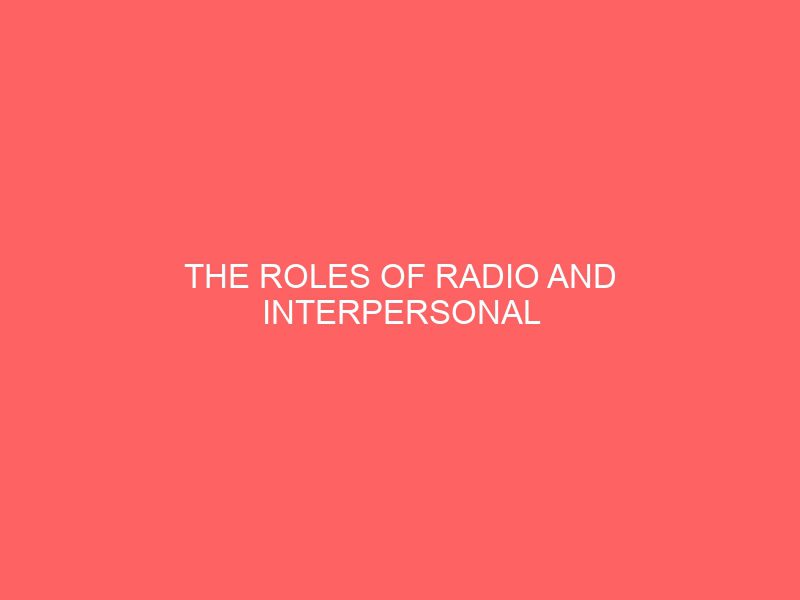Description
TABLE OF CONTENTS
Title page …………………………………………………………. ii
Approval page ………………………………………………….. ii
Dedication…………………………………………………………. iii
Acknowledgements……………………………………………… iv
Table of contents………………………………………………… vii
Abstract…………………………………………………………….. xi
CHAPTER ONE: INTRODUCTION
1.1 Background of the study ……………………………….. 1
1.2 Statement of research problem ………………………. 3
1.3 Objectives of the study…………………………………… 3
1.4 Significant of the study …………………………………. 4
1.5 Research questions ………………………………………. 5
1.6 Research hypotheses …………………………………….. 6
1.7 Operational and conceptual definition of terms .. 8
1.8 Assumptions of the study……………………………….. 11
1.9 The scope and limitations of the study …………….. 12
References …………………………………………………. 15
CHAPTER TWO: LITERATURE REVIEW
2.1 Sources of literature ……………………………………… 16
2.2 Literature review…………………………………………… 16
2.2.1 A Brief overview of communication……………….. 16
2.2.2 The history of radio: an electronic medium of
Mass communication …………………………………………. 19
2.2.3 A brief history of interpersonal communication.. 21
2.2.4 A brief history of guinea worm……………………… 23
2.2.5 Life cycle of dracunculus medinensis……………… 24
2.2.6 Treatment of guinea worm…………………………… 27
2.2.7 Social and economic impact of guineaworm…… 28
2.2.8 Endemic areas …………………………………………… 29
2.2.9 Declaring guinea worm disease eradicable……… 30
2.2.10 The roles radio has played in the eradication
of guineaworm in Nkalagu…………………………. 33
2.2.11 The roles interpersonal communication has played in the eradication of guinea worm in Nkalagu……….. 35
2.2.12 with efforts made so far does guinea worm
still exist ………………………………………………… 38
2.2.13 Barriers of the eradication of guinea worm ….. 39
2.2.14 Suggestions on the ideal roles of radio
and interpersonal communication in the
eradication of guinea worm in Nkalagu …………. 41
2.3 Theoretical framework……………………………………. 43
2.4 Summary of literature……………………………………. 46
References …………………………………………………. 47
CHAPTER THREE: RESEARCH METHODOLOGY
3.1 Research Design……………………………………………. 49
3.2 Area of the study…………………………………………… 50
3.3 Population of the study …………………………………. 51
3.4 Sample and sampling techniques ……………………. 51
3.5 Instrument for data collection ………………………… 53
3.6 Method of data collection ………………………………. 54
3.7 Validity of the instrument ………………………………. 54
3.8 Method of data analysis …………………………………. 55
References …………………………………………………. 56
CHAPTER FOUR: DATA ANALYSIS AND RESULT
4.1 Data analysis………………………………………………… 57
4.2 Test of hypotheses………………………………………… 67
4.3 Discussion and interpretation of result……………… 75
CHAPTER FIVE: SUMMARY CONCLUSION AND RECOMMENDATIONS
5.1 Summary …………………………………………………….. 78
5.2 Conclusion …………………………………………………… 79
5.3 Recommendations ………………………………………… 80
Bibliography …………………………………………………. 82
Appendix ……………………………………………………. 85








Reviews
There are no reviews yet.